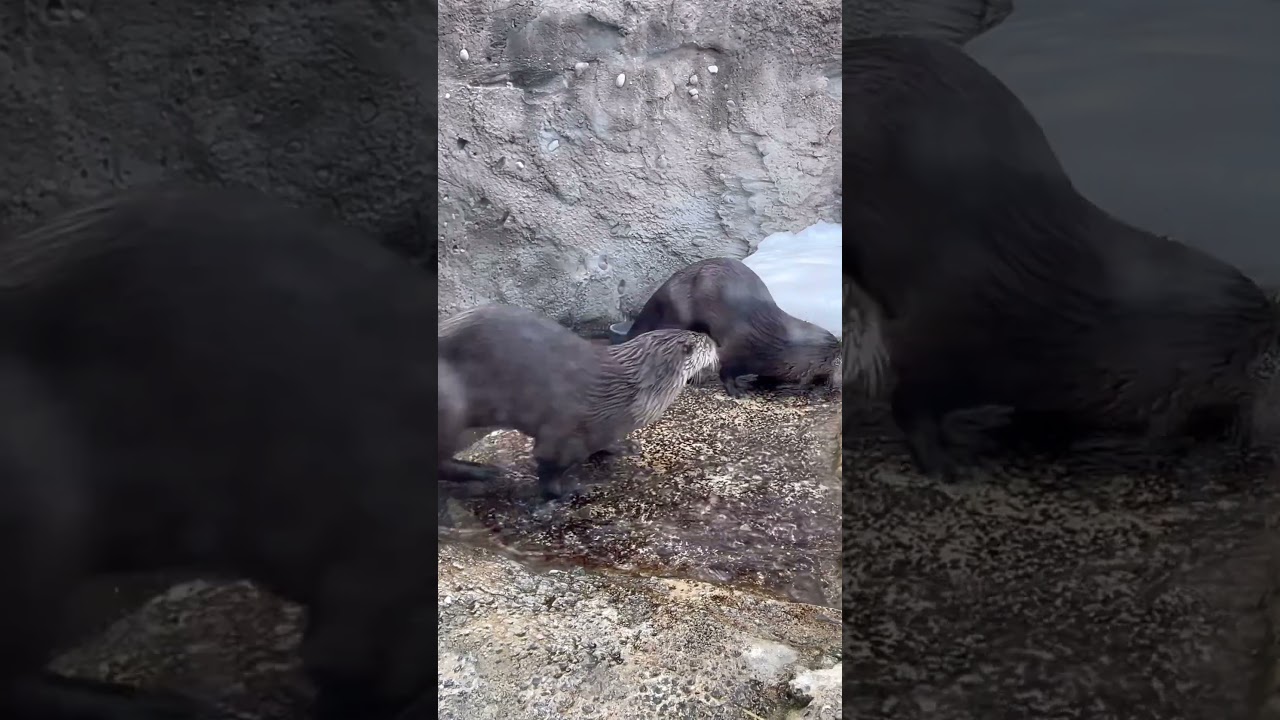– Discovering the Playful and Social Nature of North American River Otters
– Celebrating the Birthdays of Meadow, Maybelle, Fraser, and Fiddle
– Understanding the Importance of Conservation for These Aquatic Charismatics
Have you ever felt a jolt of joy while watching an animal play? If so, you might be familiar with the undeniable charm of North American river otters. These animated creatures are more than just cute faces in our rivers and waterways; they’re an integral part of aquatic ecosystems and a symbol of nature’s wild, flowing beauty.
Today, the celebrations are even more joyful as we wish a very happy 2nd birthday to four special river otters: Meadow, Maybelle, Fraser, and Fiddle. From their rambunctious snow baths to their endearing tail chases, these otters encapsulate the zest for life their species is known for.
The Enchanting World of North American River Otters
Living along rivers, streams, and lakes, North American river otters (Lontra canadensis) are a testament to nature’s whimsy and wonder. These mammals are skilled swimmers and adept at navigating the challenging landscapes of their aquatic habitats. Their streamlined bodies, muscular tails, and webbed feet make them excellent in both pursuits and play.
The Dynamics of Otter Playtime
Thought to be mere antics, the playtime of otters is a critical aspect of their development and societal dynamics. Through seemingly frivolous actions, otters hone their survival skills, such as hunting and escaping predators. Their games also reinforce social bonds within their families and groups, as communication and cooperation are essential aspects of their lives.
The Joyous Occasion of a Quadruple Otter Birthday
As Meadow, Maybelle, Fraser, and Fiddle turn two, their playful demeanor grows stronger, vividly showcasing the instincts and behaviors of their kind. On their birthday, they remind us of the delight in celebrating life and the importance of every moment of joy. Watching these creatures frolic can be a lesson in staying present and engaging fully with our immediate world.
Conservation Efforts: Protecting Our Aquatic Acrobats
While otters may thrive in controlled environments like sanctuaries or well-managed habitats, their wild counterparts face numerous threats. Habitat destruction, water pollution, and human interference have made conservation efforts crucial. By safeguarding these river dwellers’ environments, we can ensure that generations to come will also delight in their playful antics.
So, let’s dive into the captivating existence of these fascinating animals and wish our aquatic friends an otterly wonderful day!
The Playful Side of Survival
Imagine a creature so fully adapted to its environment that even its play has a purpose. The North American river otter embodies this idea perfectly. Their playful wrestling, chasing, and sliding are not merely for amusement in the wild. These behaviors teach young otters the agility and skill to catch prey like fish and amphibians or evade predators such as coyotes or large raptors.
Moreover, their play aids in the development of social structures. Otters are not solitary creatures; they live in family groups called ‘rafts,’ where communication through play is essential. It helps establish hierarchies and strengthens the bonds between group members, ensuring that they operate as a cohesive unit for survival.
The Aquatic Acrobats in Their Natural Habitat
Traveling through the otters’ home terrains, you discover an environment rich with life, meticulously maintained by the habits of these creatures. Otters’ swimming and diving antics are a marvelous sight; seeing them glide effortlessly through the water, twisting and turning with grace, showcases nature’s artistry. These mammals are crucial for balancing their ecosystems—preying on overpopulated species, which helps maintain a healthy balance in aquatic communities.
Meadow, Maybelle, Fraser, and Fiddle encapsulate the essence of river otter life. If you were to observe these four, you’d witness the complexity and harmony of their underwater ballet—each movement a masterful step in the dance of their existence.
The Impact of Human Activity on River Otter Populations
As humans, our actions have far-reaching consequences on the habitats that river otters, among other wildlife, call home. Industrial runoff, littering, and encroaching urbanization have significantly decreased suitable environments for otters. Overfishing in rivers reduces their food sources and alters the complex food web that sustains diverse species.
Efforts to rebuild and protect these environments are imperative. Initiatives like controlled breeding programs, habitat restoration, and pollution control measures have been influential in slowly increasing otter populations. Through progressive legislation and community awareness, we can reverse the impacts of environmental degradation, ensuring that otters and other wildlife may thrive.
*****
Source Description
We have wonderful news – we’re celebrating FOUR North American river otter birthdays today! Females’ Meadow’, ‘Maybelle’ and males’ Fraser’ and ‘Fiddle’ are all turning 2! 🥳
Whether tolling around in the snow, chasing each other’s tails, or going for a swim, otters are known for being playful, which helps them develop close social bonds. It also makes them pretty fun to watch! 🥰
Join us in wishing these two-year-olds an otterly amazing day! 🦦
#YourZooYYC


